Chopping along the Crooked Lane
A nuanced approach to managing aggressive generalist plants; or Kill 'em all, God will make more
In middle July, a blaze of color begins kindling deep in this imperfect patchwork of old pasture ground and tallgrass prairie. Overnight, the delicate buds of bee balm pop with pale purple flame, the heavy air spiced with thymol. Fuschia disks of purple coneflower flicker on the field edge, an alluring ray of color that calls in native flies and bees and beetles –all nameless to this poorly educated swine herder. I swish my scythe across bottomland prairie, carefully laying thick swathes of abundant sorghastrum grass, twining bindweed, fruit-laden arches of thorny blackberry, and slim, skeletal stalks of dogbane down to make way for a new paddock lane. The lane will be crooked, and a crooked lane requires more fiberglass fence posts to temporarily route the single strand of electrically charged, wire-embedded plastic twine into a new zone of containment for the hogs that currently snore in the buzzing embrace of a cedar tree, the aromatic branches home to a daring trio of cowbirds that swoop down to the pig shit to peck out snips of partially digested grass and grain.
The lane is crooked, because after a decade of grazing this recovering prairie with pigs and goats and turkeys and cattle, I’ve developed some sense, albeit an unstudied and anecdotal sense, of distinction between which plants to trim, and which to leave be– the pale flames of bee balm and gilded fire of September goldenrod is unlikely to be extinguished by this blade, and ironweed will continue to engulf the rough wet ground no matter how much I decapitate in my mowing. But something more rare, at least here– a small stand of rattlesnake master, a placid patch of lobelia, the smoldering coal of Joe Pye weed, a fragile stand of penstemon, or a single blazing star can be spared by a slight manipulation of my blade, and the addition of a fencepost. Unstudied as my actions are, I do my best to engage my senses and remain receptive to feedback from this imperfect quilt work of tall grass prairie entwined with an inexhaustible seedbank of introduced Eurasian pasture plants –big bluestem and red clover, sawtooth sunflower and timothy grass. I clear space for the under-represented ones, and slice through the common species without compunction.
I scratch a jagged cut through the rank growth while butterflies in peril of extinction swoop to milkweeds on fragile wings and mantises slowly grip their way up thick stalks of prairie plants, until the trace of vegetation reaches the tell-tale silver foliage of an arching, thorny autumn olive shrub that looms over the hot buzz of the prairie, jewelled in immature fruit. I lay down the scythe, gather up my brush ax, and pound the sharp steel wedge of the tool into its flesh, splintering the yellow spine of the contorted brush. I’ll admit it is not dispassionate work. I chop again and again, until the trunk is broken into jagged shards, and drag the offending tree over to a dessicated burn pile of its brethren. Privately, I mutter the words “Kill ‘em all, God will make more”, a mantra that I jokingly chant to myself while sawing, chopping, lopping and hoeing out the ever-growing cover of Elaeagnus umbellata that threatens our little slope of prairie pasture.
It’s difficult to have a discussion about invasive plants without pissing someone off, and I’d have to be either way smarter, or more likely way stupider than I am, to attempt changing anybody’s mind on the subject. Even the term “invasive” is offensive to some folks– folks who I have at least 90% in common with ideologically. Being a member of a species that has built deep relationships with plants, and a global civilization which has survived this far in time by stewarding and nurturing them, makes us prone to developing strong cultural bonds with plants. Emotional bonds to these things which are inextricably linked to our continued existence. While it is unlikely their intent, plants stir feelings in people– particularly my kind of people. And so, when a plant is accused of not belonging somewhere, there is likely to be one party pissed off to find it out of place, and another one equally pissed off to see the types of eradication campaigns drafted to eliminate its presence. If there is anything reassuring about this often passionate disagreement between the two parties– both of whom care deeply about plants– it is that we will simply never reach an ultimate outcome. The folks who have made it their sole calling to defend or attack invasive plants will likely forever have the opportunity to do so. There seems to be no complete solution regarding their presence, only a series of difficult, but navigable, trade-offs. Invasive plants (yes, I will define this term and address its controversy) will probably never be eradicated from their range of successful introduction. The question might rather be to what degree humans should exhibit control and accept responsibility for these populations.
But first, gentle reader, a clear disclaimer: I am, despite any suggestion to the contrary, an ignorant bumpkin with no formal education in botany, biology, or ecology beyond high school, and even then, I wasn’t really paying attention. Still, certain facts cannot be ignored, neither by all y’all with big brains, or the rest of us peasants who now and again fall out the back of the turnip truck –largely that our physical planet has limitations– from climate to biodiversity, from the atmosphere to the common dirt we stand on. Like everything else, environmentalism is intersectional– a rippling web of causality, cycles of evolved harmony and chaos.
Another clear disclaimer is that I will attempt, and likely fail, to ward off any kind of fatalistic thinking in this piece. I am prone to this, and on any given day, I find myself flitting between mourning a dying planet and fantasizing about regenerative solutions. From the ice caps that melt and bleed into acidifying seas to the silent and sterile cemeteries of corn and soy that sway like an expanding, lifeless ocean, and all the desperate people seeking higher ground in an increasingly hateful world, I still think good things are worth doing– sue me for being human.
A final disclaimer: over the course of a decade, I’ve decided that I really don’t like autumn olive, even though I enjoy eating the fruit.
The USDA (that federal turnip truck currently being run in reverse by a Texas lawyer that somehow got mixed in with all the rest of the injured turnips) defined invasive species fairly narrowly. According to Executive Order 13112, "'Invasive species' means an alien species whose introduction does or is likely to cause economic or environmental harm or harm to human health.” That said, when out of balance, native species are sometimes capable of the same kinds of harm… here on our prairie ground our native Eastern Red Cedars have a tendency to overpopulate in grasslands that have not received the proper burn regime. Over the years, the dense cover of these native trees shade out the sun-loving prairie plants, and their tendency to trap humid air and break a good headwind sometimes renders prescribed burning ineffective. In other words, these native plants will have definitively negative effects on economy (loss of forage), environment (loss of biodiversity), and human health (allergies), comparable to “alien” species, if the larger order of native ecology is fractured, in this case by a lack of fire. The question also remains on how we define “alien”... a decade ago, the Missouri Department of Conservation sold me black locust saplings– a Missouri Ozark native that causes swift and significant loss of biodiversity here in the Northeast part of the state and many other places across the continent. Black locust timber, however, is probably one of the more lucrative forestry products that can be produced here in the Midwest (Not to mention Hungarian agroforestry systems that produce both timber and large scale bee-fodder systems, another subject for another piece).
Pigs, for that matter, are an invasive species. As anyone who has tried to take a dip in the Des Moines River will tell you, they are a hazard to human health. Turning them loose in the woods can often result in extreme environmental degradation, and I’ve personally found raising them to be economically harmful. Of course, sometimes, pigs can be raised in a way that is harmonious with their environment, a benefit to the health of humans, and fairly lucrative. It is perhaps the human practices surrounding the introduction of a species –including the practice of ignoring them– that leads to our projection of binary, “good” or “bad” values.
Then, there is the word itself: invasive. Many folks equate this language with xenophobia, and yeah, sure, I’ll admit it has that vibe. I will even acknowledge that discussion in conservation groups about these species can begin to adopt a xenophobic tone– a bit too much of a snarling emphasis on the country of origin at times. Perhaps more acceptable term may be aggressive generalist species. And yes, the Nazis did place an importance on native plants, though I sometimes wish that anybody who rhetorically invokes them would just go out and make their grandpa proud by knocking a few off instead. Words have power, and words are important, and if a change of words was all we needed to change our approach to biodiversity at risk, I am happy to oblige. Still, the fact remains that these species, at their worst, are oppressors of indigenous life, introduced by colonizers and their progeny. In light of recent events perpetrated by our own fledgling American gestapo, it seems silly to equate stewarding a threatened ecosystem by removing autumn olive or sericea lespedeza with being in ICE.
Autumn olive is one of the three or four big ecosystem threatening plants we deal with here– the others are Japanese honeysuckle, multiflora rose, and sericea lespedeza. For what is considered to be by all accounts a noxious, oppressive, and problematic weed here in North America, it really puts its best foot forward. In spring, its scent is intoxicating, a complex, sweet perfume like vanilla and jasmine– delicious and divine. Many of our native bumblebees seem to enjoy it as much as I do. It does not submit to the wilting heat of summer here, with silvery reflective leaves it rejects the solar onslaught even as vegetation adapted to our region for the past 8,000-10,000 years slumps and dries in this ever-changing climate. It crops up in the thinnest of soils, exploiting ground that was extracted and abused for short-term gain, fixing nitrogen and enriching the earth, and then, come September, it gleams with ruby-like bunches of sweet, tangy fruits so abundant that the thick flocks of birds that feed from the laden branches cannot consume it all. It is resilient to a changing climate, enriching to the soil, and a source of abundant food. Autumn olive was brought to the US for a few reasons– biological reclamation of strip mining sites, windbreaks and erosion control during the dust bowl era, and nominally, habitat enhancement for wild bird populations. And still, it gives me great joy to chop these trees down, and watch them wither, grown through with bluestem and bergamot.
Autumn olive will feed quite a few birds, and a small handful of insects. The fruit, however, is low in fat, and not of particular value to migrating birds at the time of year when it’s ripe (native shrubs like spicebush are far more nourishing for migration). A healthy tree of even a few years old can produce over ten thousand lightweight seeds that are easily spread by these birds. Unchecked, the spread of autumn olive quickly out-competes more nutritious fruits and seeds. The nitrogen fixing effects of autumn olive are also a double edged blade, in the context of ecology. Many of us are growers of food, and have a deep and abiding appreciation for fertile ground, but many ecosystems are centered around a lack of fertility. Other ecosystems will have a few native nitrogen-fixing species deserving of this particular niche, that also feed more specialized –and threatened– insects.
Where the camp of folks who are let’s say more accepting of these aggressive, generalist species sometimes manage to hook me is climate adaption, and the reason I hadn’t written this piece years ago is that I have never had a solid response– it is probably true that as climate change worsens over the following decades, ecosystems will become inexorably altered, many niche species will go extinct, and adapted species will fill new roles, supporting a web of life far different from what we know. With or without us, life will continue on, just like the horses who existed on this continent, vanished, and returned with the Spanish, or the persistent presence of dandelions that awaken in the gray thatch of winter.
I’ll have to die first, but not before I clear every single last one of these autumn olives off this hill. And I will further contend that it is the responsibility of those of us fortunate enough to tend and steward restored or remnant ecosystems to respond to climate change by disseminating at-risk plant populations further north (or south in the case of my friends in other hemispheres) with the hopes that their associated insects will follow, and likewise, prepare to gradually assist in migration of at-risk species from nearby ecosystems.
Regardless of our deepening understanding of ecology and other sciences (which in some cases may just be a deeper understanding of the pure vastness of what we haven’t figured out yet as a species), plants will always invoke feelings from us humans. Just like the burgeoning blooms of swamp milkweed draw hundreds of bees, beetles, butterflies and larvae, we are drawn to defend some species and malign others. It is notable that introduced, problematic members of the Insecta class do not seem to have these champions. I have never once heard anybody defend a Japanese beetle, though perhaps someone will go out of their way to prove me wrong. At the end of the day, I believe prairie is worth preserving, especially in the face of such daunting challenges. I have little control to exercise in the matter regionally, but I can at least help keep things from sliding off the rails completely. Maybe I can help keep prairie alive until it begins to matter to more people.
I move my somewhat invasive pigs on into their next paddock– I don’t have the paperwork to prove it, but I’ve found that under the ideal climate and conditions, I can move them from pasture to pasture with little detriment to the existing web of life. They chomp the grass and trample it, cloistering themselves in the shade of solitary oaks, Eastern red cedar, and even autumn olive. They will nibble the forbs, learning what they like and what they don’t, and continue to allow the cowbirds a rich buffet in their middens. Once they’ve left, before the stand of native grasses and forbs recover from the grazing and trampling, I am allowed better access to the trunks of the offending species, where I will chop them down. Most of the autumn olives will re-sprout in the spring, some of their energy diminished, but still able to fully recover if I do not return to hoe out the fresh growth. Still, they will not produce seed this fall, and perhaps the birds will exploit and spread a more homegrown food source this autumn.
Humans, especially agrarian ones like me, have control issues. I stand guilty as charged on this, and keen readers of this almanac will know that I am not ignorant to my own issues. But when my sunrise walks along the buzzing heat of recovering tall grass prairie are interrupted by the gradual creep of darkening stands of autumn olive, when beneath my feet I watch the complex mosaic of grasses and forbs shatter with vast fractures of sericea lespedeza, as the patchwork quilt of bug and bloom frays, threadbare and oppressed by arching shadows of multiflora rose, it isn’t a lack of control that I feel, but a deep, mourning, a regret born not only from the introduction of these plants, but the centuries of degradation, extraction, and ethnic cleansing that led to that introduction. And then, chopping and slicing crookedly through the morning haze, a compulsion to make it right.
Post Script: There’s a lot I didn’t touch on, in regards to the particular ethics around herbicide, tillage, and other controls. There’s probably also some deeper considerations for this complicated topic I haven’t gotten to. I figured my essay was getting pretty long, and that I’d likely receive some feedback from readers to sort through. Expect more on this subject at a later date. Civility on the internet is in much the same condition as tall-grass prairie in North America, so don’t expect to hear back from me if you aren’t kind.


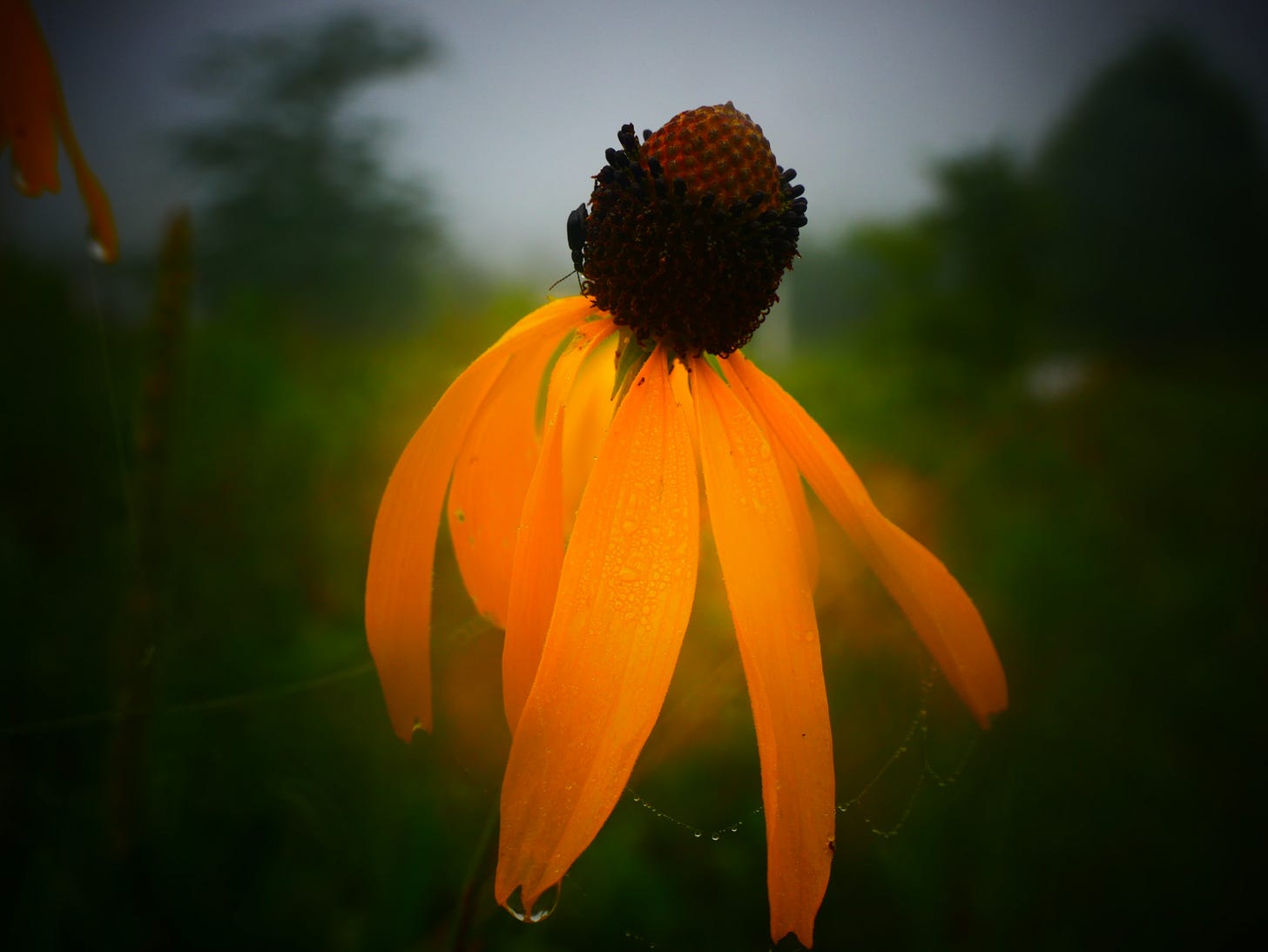
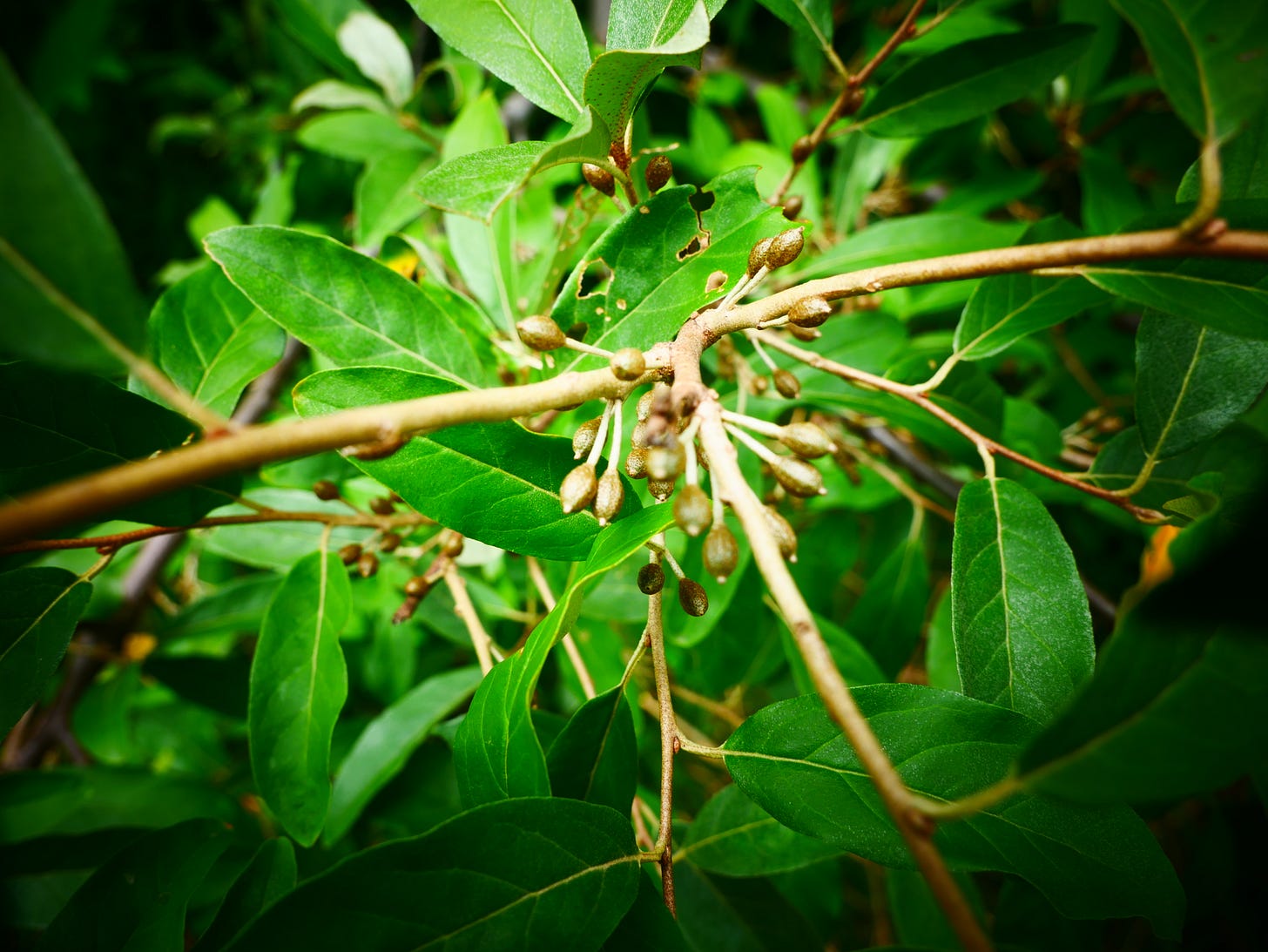
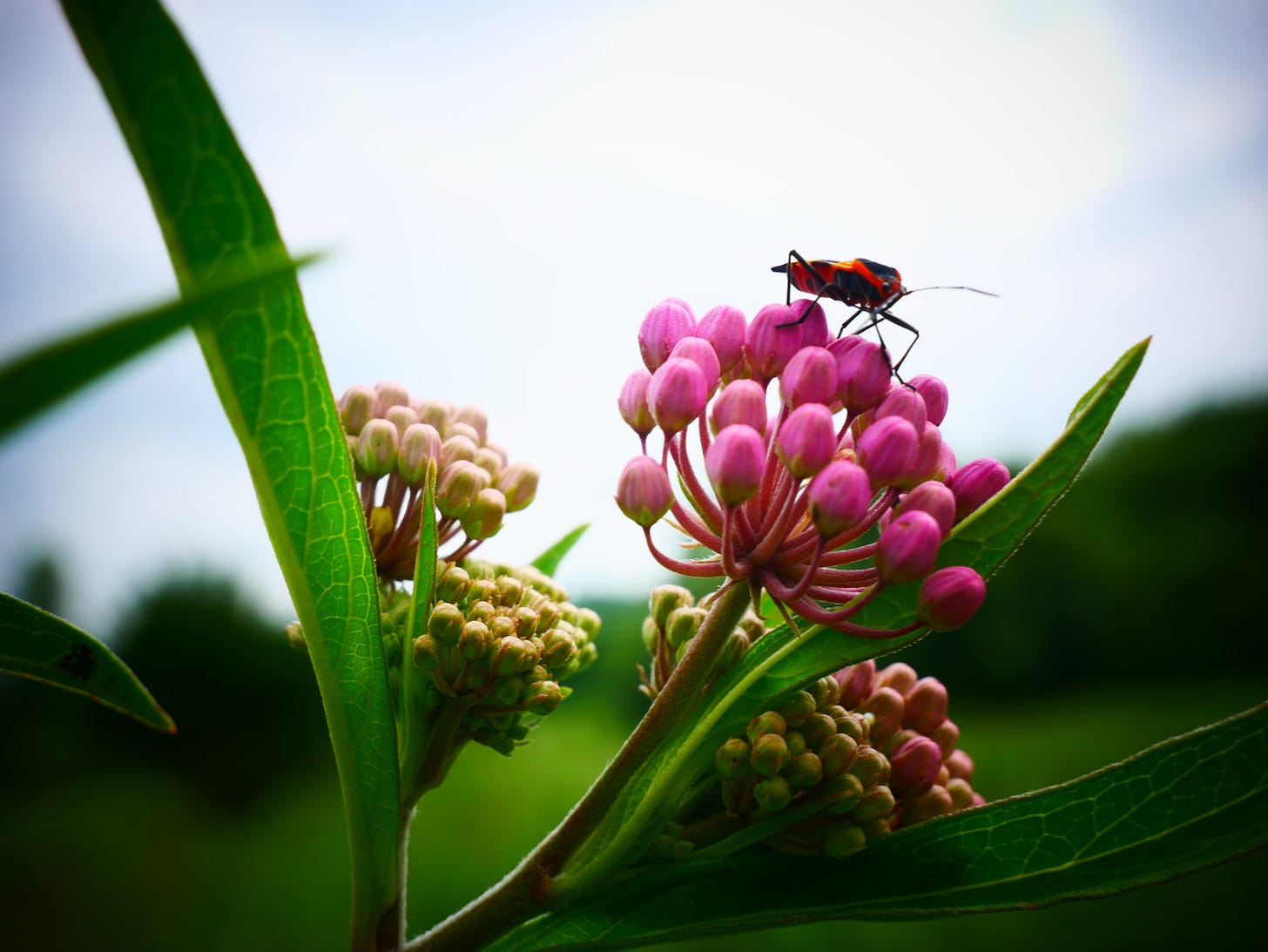
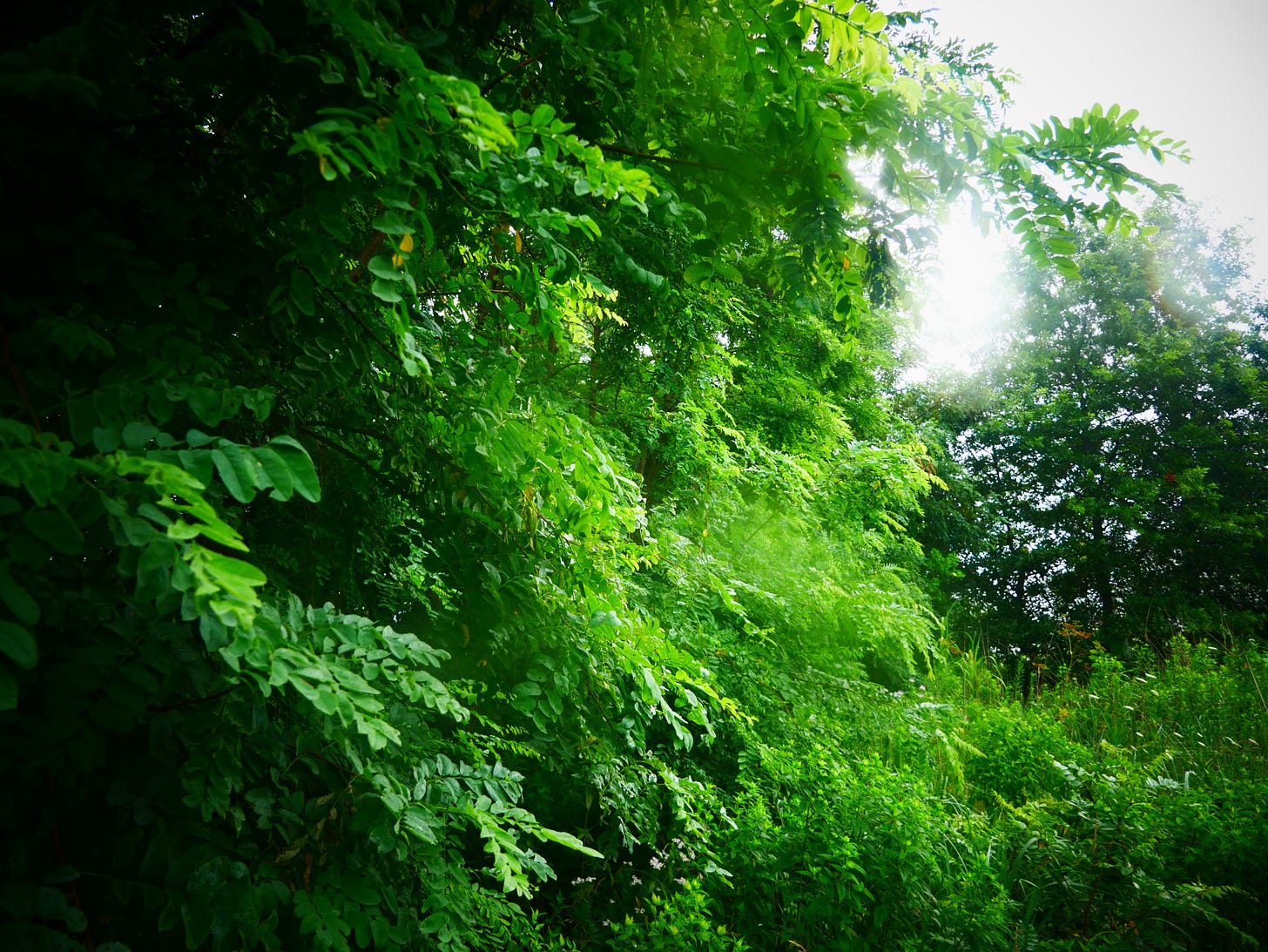
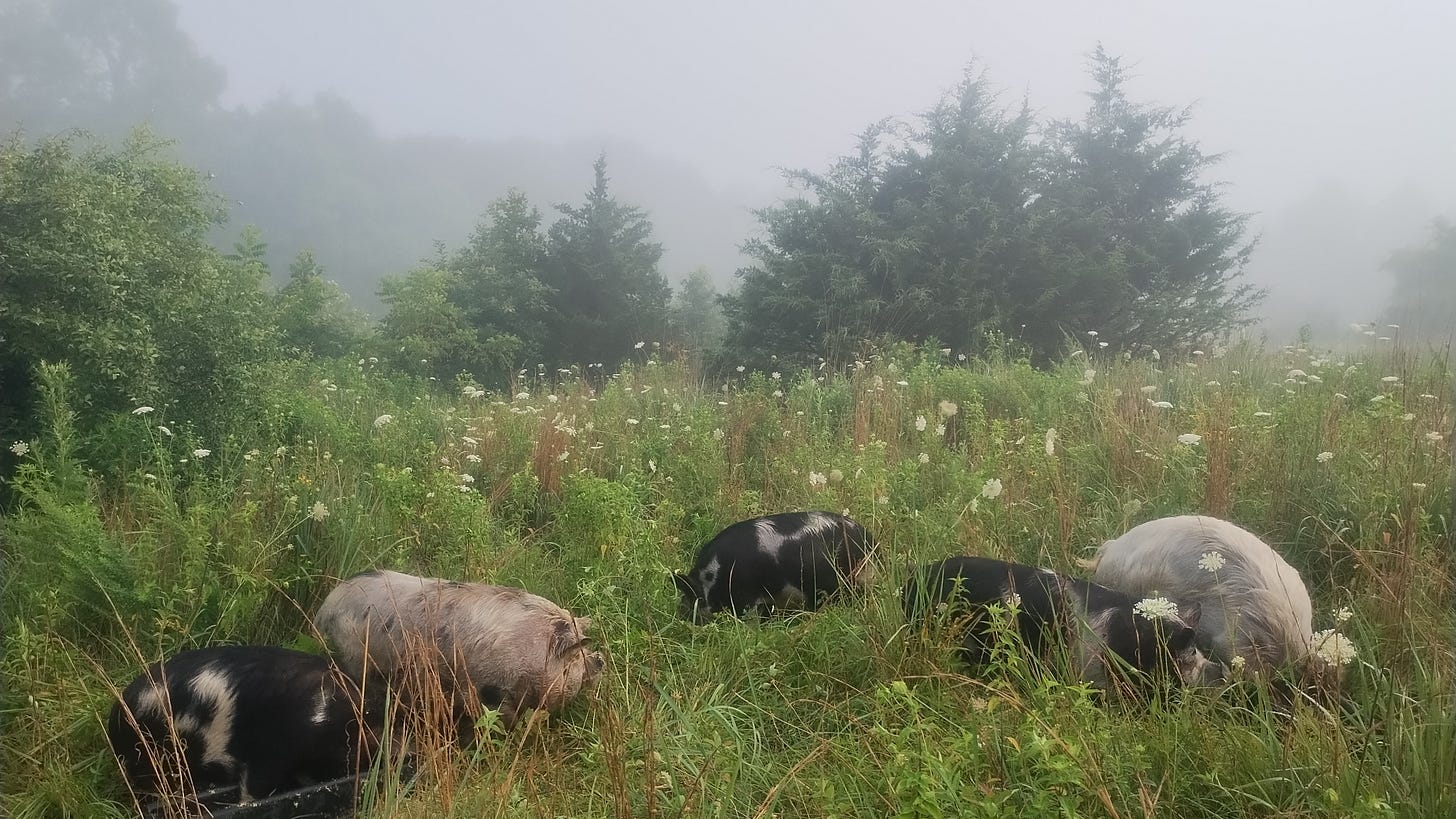
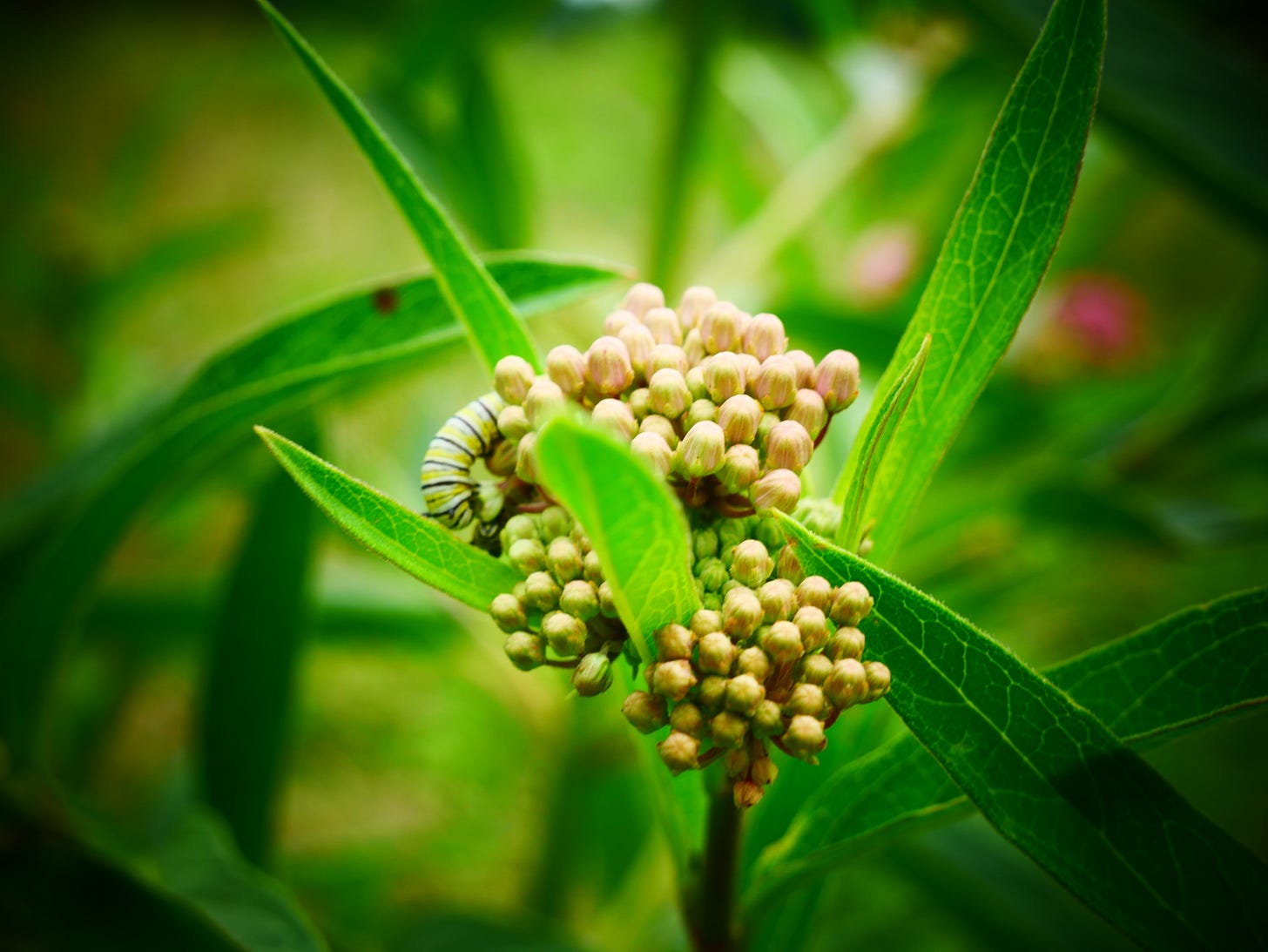
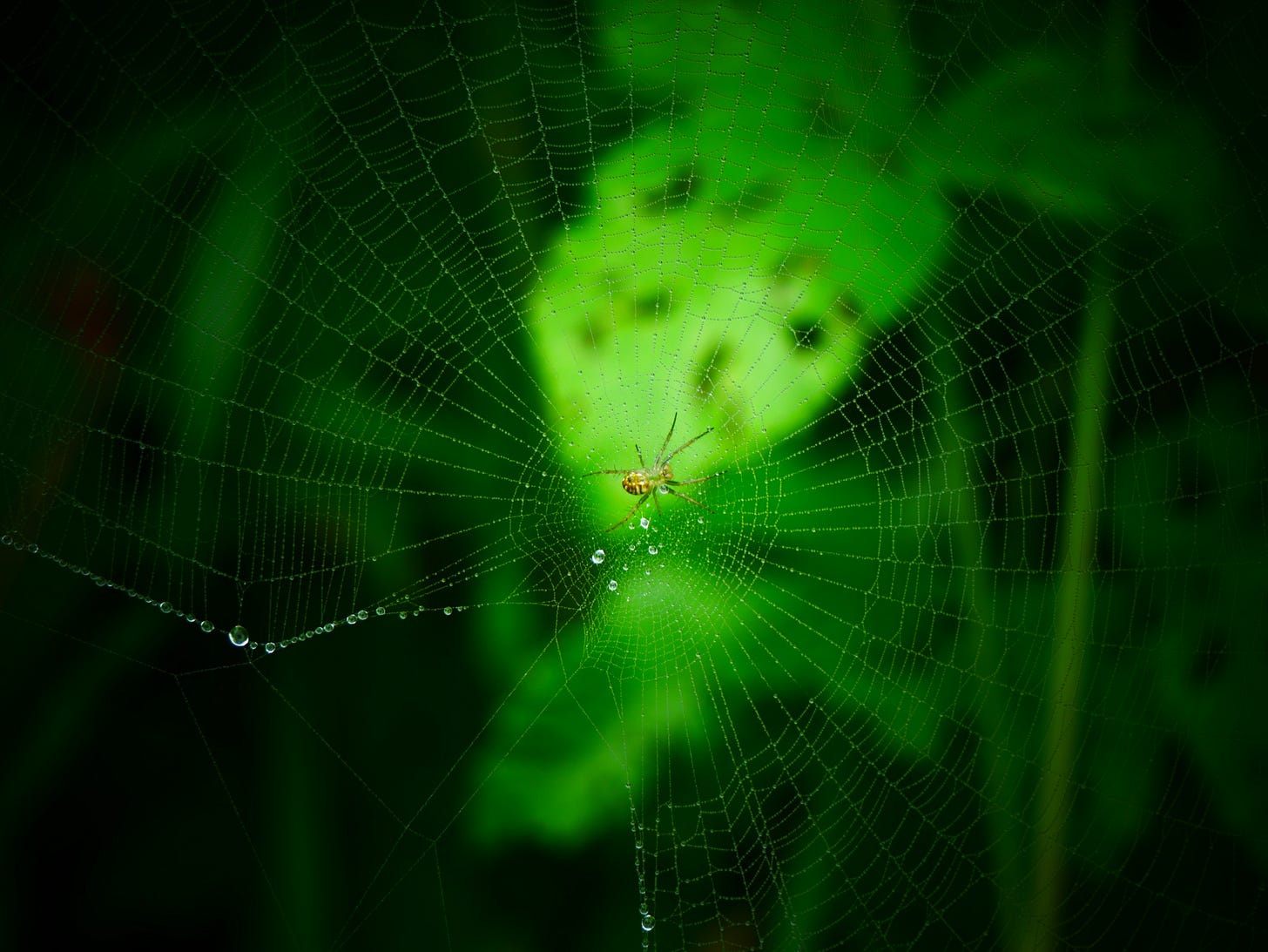
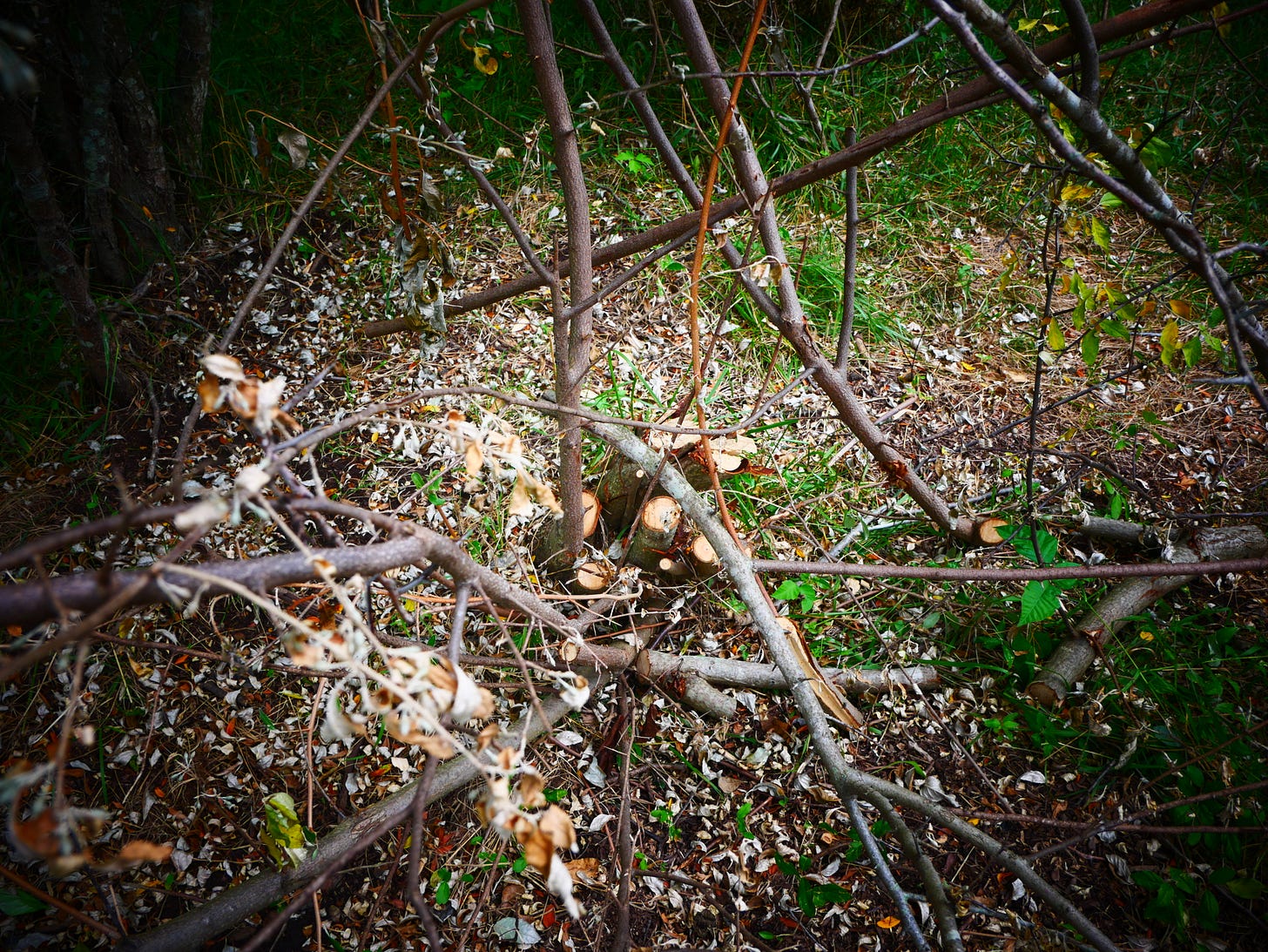
A few years ago I started letting some “weeds” grow in my thoroughly domesticated suburban yard. The result is a lush patch of ferns in a flowerbed, a crop of wild black raspberries, and a couple of wild black cherry trees that will bear fruit soon. The best part is they basically care for themselves, other than a little pruning.
Plenty of nonnatives around too, of course, but I am loathe to turn on my fellow wanderers.
So glad you wrote this. I spend my pasture time cutting autumn olive, encouraging natives (planting and avoiding mowing at the wrong season. It's such a small thing to do, but nourishes the soul.
Invasive and native/non-native are really individual subjects, but yes, people get really fired up on either subject. My goal is balance, brought by diversity. So yes to more non-invasive natives, to help restore the balance. Yes to human management to help combat human carelessness.